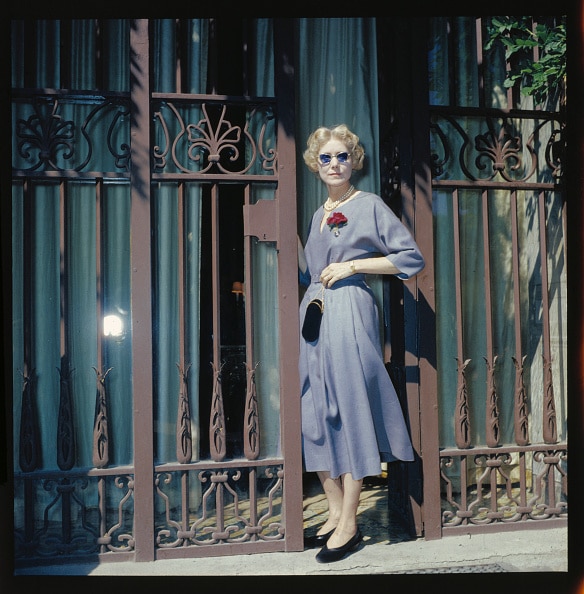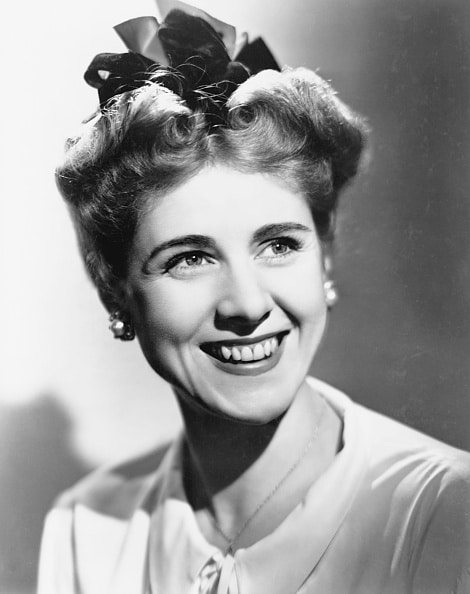After Broadway’s infamous hiatus due to Covid-19, a new musical, Flying Over Sunset finally premiered last fall at Lincoln Center Theater. Written and directed by Pulitzer Prize and Tony Award winner James Lapine and scored by a fellow Pulitzer Prize, Emmy, and Tony Award winner Tom Kitt, the new musical had the promise of being a smash, but suffered from mixed reviews from both critics and members of the audience.
If you were able to catch this show during its limited run, you may have noticed a familiar location listed as a setting in the Playbill: Ridgefield, CT. While much of the show is set in Hollywood – specifically Sunset Boulevard – in the 1950s, a very prominent local estate serves as the backdrop for a highly emotional musical scene. The show depicts an unlikely mix of characters: Hollywood actor Carey Grant, writer and philosopher Aldous Huxley, and Connectictut’s own Clare Boothe Luce embarking on an acid trip together in the hopes of working through their traumas.
While the musical is a work of fiction, all three characters did indeed take the hallucinogen several times throughout the 1950s – well before lysergic acid diethylamide (LSD) became en vogue in the 1960s through the experiments of Timothy Leary. Luce was a user of the then legal narcotic and it was at a sprawling Ridgefield estate she shared with her husband, founder of Time, Life, and Fortune magazines, Henry Luce where she would embark on her third experience with the psychedelic drug in just a few months in May of 1959.
Life of a Legacy
 (Original Caption) This is a photo of Claire Boothe Luce, U.S. Ambassador to Italy.
(Original Caption) This is a photo of Claire Boothe Luce, U.S. Ambassador to Italy.Clare Boothe Luce was nothing short of a renaissance woman. Throughout her life, she was a successful author, playwright, war journalist, feminist, editor, congresswoman, mother, and ambassador. Though she lived an objectively charmed and pampered life, she also suffered a great deal of tragedy as well. It was these tragedies that piqued her interest in LSD.
Born in New York City in 1903 to a brilliant but unstable father with a gift for playing the violin and an ambitious mother, Clare bounced around in several cities in U.S. as a child before becoming a Broadway understudy at the tender age of ten. After traveling to Europe with her family, she became a proponent of the women’s suffrage movement and later married her first husband, George Tuttle Brokaw. She and Brokaw had one child together, a daughter named Ann, but Brokaw’s temperament and issues with alcohol proved too difficult to maintain their marriage. The couple divorced in 1929.
Luce poured herself into the arts to mourn the loss of her marriage and ended up writing a hit play, The Women. The satirical play about scheming Manhattan socialites performed so well during its run on Broadway that it was made into a film in 1939 starring Norma Shearer and Joan Crawford. Albert Einstein was reported to have attended the film’s opening in Princeton, NJ. The film was remade in 2008 and had Meg Ryan, Annette Benning, Eva Mendes, and Debra Messing at the helm.
Right before the play opened in 1936, Luce married her second and final husband; publisher Henry Luce in 1935. Shortly after they wed, Luce was given the opportunity to work as a correspondent for Time and Life magazines during World War II. After returning home, she became a managing editor at Vanity Fair and wrote two nonfiction books. Luce was well known for not only her talented writing skill, but also her biting wit. Perhaps her most famous phrase is “No good deed goes unpunished,” or, “Widowhood is a fringe benefit
of marriage”.
In 1942, Luce won a seat in the House of Representatives as a Republican to represent Fairfield County, making her Connecticut’s first elected Congresswoman. During her term in Congress, she helped to create the Atomic Energy Commission and instituted the Luce-Cellar Act of 1946, allowing immigrants from both India and the Philippines to become naturalized citizens.
At that time, though, tragedy struck Luce as her only child, Ann, was killed in a fatal car crash at Stanford University, only years after Luce’s own mother had suffered the same demise. She sought out the help of psychiatrist that would ultimately spark her interest in LSD.
When her term in congress was up, Luce was appointed ambassador to Italy by Dwight Eisenhower in 1952. Her anti-communist speeches were very effective through the country during her tenure, and she was eventually well received by the Italian citizens.
 Clare Boothe Luce was an American writer who wrote several plays. She served as ambassador to Italy 1953-1956. (Photo by © CORBIS/Corbis via Getty Images)
Clare Boothe Luce was an American writer who wrote several plays. She served as ambassador to Italy 1953-1956. (Photo by © CORBIS/Corbis via Getty Images)Luce left her post in 1956 after suffering arsenic poisoning. The government questioned if the poisoning was a result of a political move, but nothing they found was conclusive. By 1964, both Luces had retired and remained married despite many marital issues until Henry’s death in 1967. A few years later, in 1973, Richard Nixon named Luce to the President’s Foreign Intelligence Advisory Board and she was awarded the Presidential Medal of Freedom by Ronald Reagan in 1983.
Nearing the end of her life in the late 1980s, Luce became a hero in the feminist movement. Given that women in America didn’t have the right to vote until she was 16 years old, this should come as a surprise to no one. No matter where you fall on the political scale, Luce was an incredibly prolific politician and artist, and her legacy is one the town of Ridgefield should not soon forget.
The Luce Mansion
This massive estate was constructed in 1939 by the same architectural firm that designed the original Whitney Museum of American Art in New York. The Georgian-style estate spans over 46 acres of private land with an adjacent wildlife preserve adding to its secluded feeling. In addition to the 12,837 sq. ft. main manor house, there are indoor and outdoor swimming pools, a guest house, tennis court, caretaker’s cottage, greenhouse and a Vermont slate patio.
Aside from the Luce’s, who lived at the mansion from 1946 – 1966, it has also been home to several prominent figures of the 20th century. Its original owner, Wadsworth R. Lewis, was the son of a railroad tycoon. His foundation, the Lewis Fund that was established following his death in 1942 and still contributes to the community at large through donations to the local library, the Boys and Girls Club, and Meals on Wheels, as well as select art programs such as the Thrown Stone Theatre Company.
Another distinguished resident of the beautiful estate favored the library above all other rooms. Hans Peter Kraus, a rare book collector filled the shelves of his study with artifacts including a Gutenberg Bible, a copy of the Declaration of Independence, and a first printing of the U.S. Constitution.
In recent years, the closets were no doubt the most loved corridor, as the house was occupied by former model turned fashion designer, Basha Szymanska.
Though I have to agree with the many not so stellar reviews of Flying Over Sunset, I have a great appreciation for its central theme; connection. Though Grant, Huxley, and Luce connect with each other during their acid trip (and the hilarity produced as a result), they more importantly find a deep connection within themselves as they work through their unprocessed grief and face the demons of their pasts. •